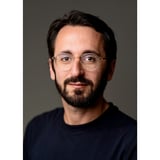Summary
Early in projects, big or small, resist the urge to go with your first idea, and instead work to explore all kinds of possible solutions. This will allow you to better understand the problem you’re trying to solve, and help you avoid potential pitfalls later in the design process. In this session we’ll explore commonly used design thinking techniques to help you push past the obvious ideas, generate many ideas, and find the right solution.
Key Insights
-
•
Defining the right problem is more important than rushing to design a perfect solution.
-
•
How might we statements help frame problems as opportunities without prematurely settling on solutions.
-
•
What if prompts introduce creative constraints that generate innovative ideas by exploring unusual scenarios.
-
•
Including diverse team members beyond leadership, such as developers and product creators, enriches ideation.
-
•
Anonymous idea submissions can reduce bias and encourage more honest contributions.
-
•
Edge cases and accessibility-driven design can lead to solutions beneficial to mainstream users.
-
•
Rapid visual collage combining screenshots and sketches accelerates ideation and breaks creative blocks.
-
•
Borrowing UI concepts from existing products is effective for jumpstarting new design ideas.
-
•
Constraints, such as limited tools or one font size, push designers to innovate differently.
-
•
Facilitators must manage group dynamics carefully to prevent dominant voices from stifling creativity.
Notable Quotes
"A great design solution for a poorly defined problem is infinitely worse than an average solution applied to a well-defined problem."
"Don’t get stuck in the refinement stage too early."
"How might we statements are small but mighty questions that let us reframe insights into opportunity areas."
"What if prompts let you try things that might be messy or unrealistic but can inspire part of the final design."
"Designing for edge cases can lead to solutions everyone wants to use because they’re more comfortable and inclusive."
"Throw away the rule book in early ideation phases to get as many ideas out as fast as possible."
"Borrowing from existing digital products helps show stakeholders proven design approaches rather than starting from zero."
"Anonymous idea sharing helps prevent bias when some team members have more sway or intimidate others."
"Constraints during ideation sessions help avoid endlessly blue-sky thinking and keep ideas focused."
"If you can get all the people in an organization rowing in the same direction, you could dominate any industry at any time."
Or choose a question:
















More Videos

"We have session notes, sketch notes, resource lists, videos, and decks — no need to take notes yourself."
Bria AlexanderOpening Remarks
November 18, 2022

"Only work with companies willing to invest the time required; otherwise, deliver what you can and be honest about it."
Ted Booth Sam Ladner Fredrik Matheson Russ UngerDiscussion
June 8, 2016

"If you don’t understand the why, what, and how of change, don’t communicate it — you’ll only cause more stress."
Alla WeinbergWorkers Are Sick of Change: The Cure is Psychological Safety
June 6, 2023

"Banks have 144 years of tech baggage making digital-first mindsets hard, and culture change is just as important as technology."
Julie Gitlin Esther RaiceDesign as an Agent of Digital Transformation at JPMC
June 9, 2021

"When we empower others, we are actually reinforcing the hierarchy we seek to subvert."
Victor UdoewaRadical Participatory Research: Decolonizing Participatory Processes
March 9, 2022

"I’ve sat on both sides of the table. I’ve sometimes help both jobs at once which I don’t recommend."
Christian CrumlishIntroduction by our Conference Chair
December 6, 2022

"We are going to have a very cherry day. You get it? Because I’m wearing cherry earrings."
Bria AlexanderDay 2 Welcome
September 24, 2024

"I was literally making up our strategy even though the company was profitable and growing."
Simon WardleyMaps and Topographical Intelligence
January 31, 2019

"Quick pilots are low in commitment, highly visible, and get everyone excited while figuring out funding later."
Sarah AuslanderIncremental Steps to Drive Radical Innovation in Policy Design
November 18, 2022
Latest Books All books
Dig deeper with the Rosenbot
How do disabilities exist on a spectrum and what are examples of situational and temporary disabilities?
What small-scale projects can help service design teams gain early credibility in new organizations?
What role does service design play in accelerating organizational growth beyond project support?
















